From Your Groceries to Your Gadgets: The State of Thermoforming in 2025
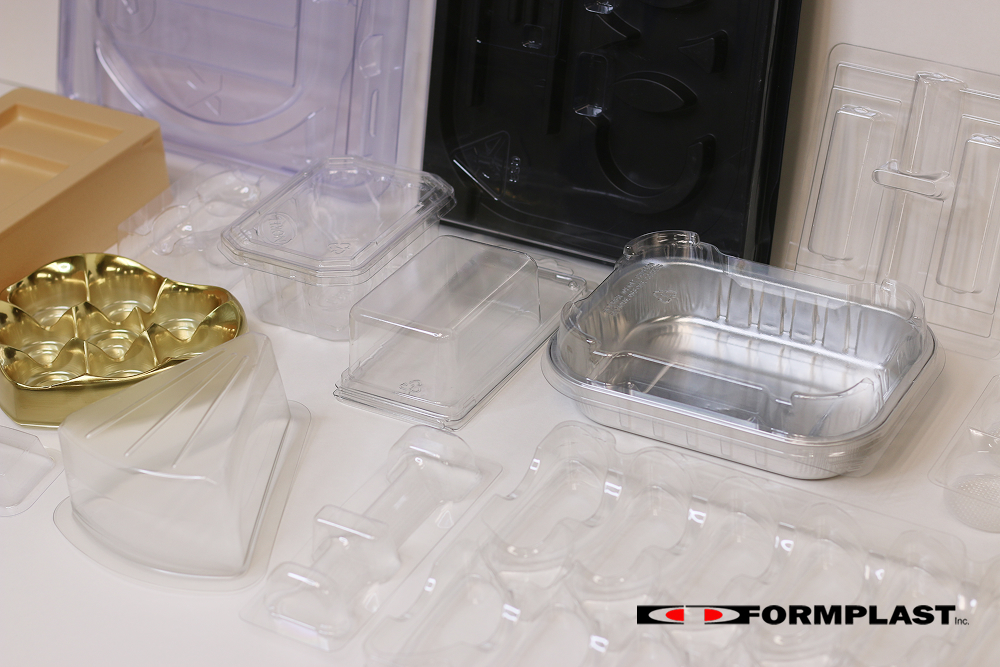
What is Thermoforming?
Thermoforming is a manufacturing process where a plastic sheet is heated to a pliable state and then shaped over a mold using vacuum or pressure. Although essential to modern industry, this technology is built upon foundational principles dating back more than 150 years.
Get Started Now!
Ready to package your product with precision-engineered thermoformed designs? Request a free quote now, and our team will fast-track your prototypes and provide competitive pricing tailored to your needs.
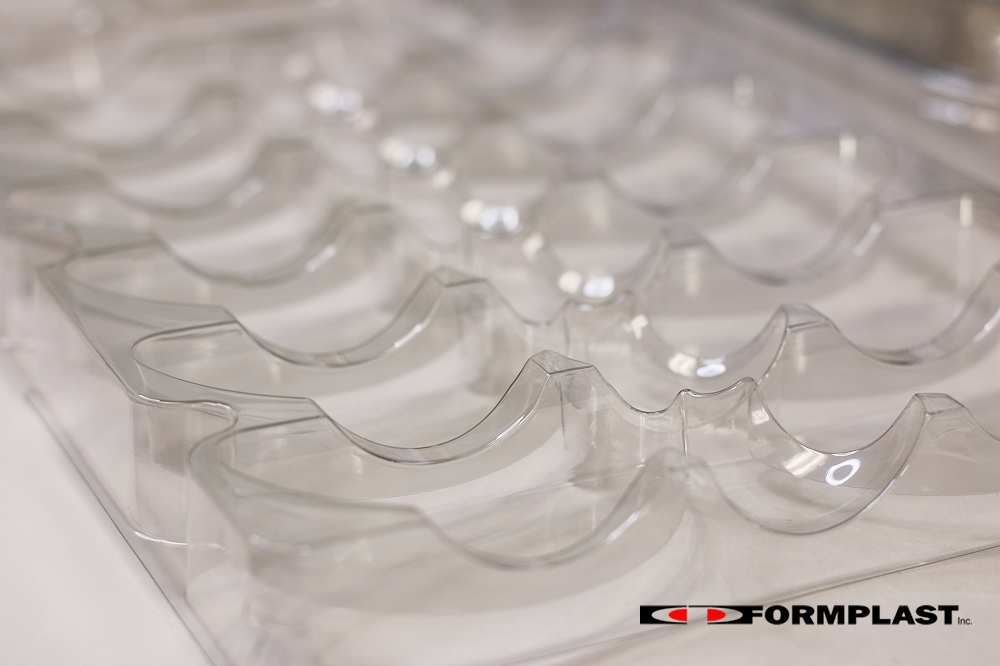
The clear plastic container protecting your cretons at the grocery store is a perfect daily example of thermoforming. That sturdy PET clamshell, likely made from entirely recycled materials, is the modern result of a technology that started with 19th-century experiments and is now a cornerstone of the packaging industry.
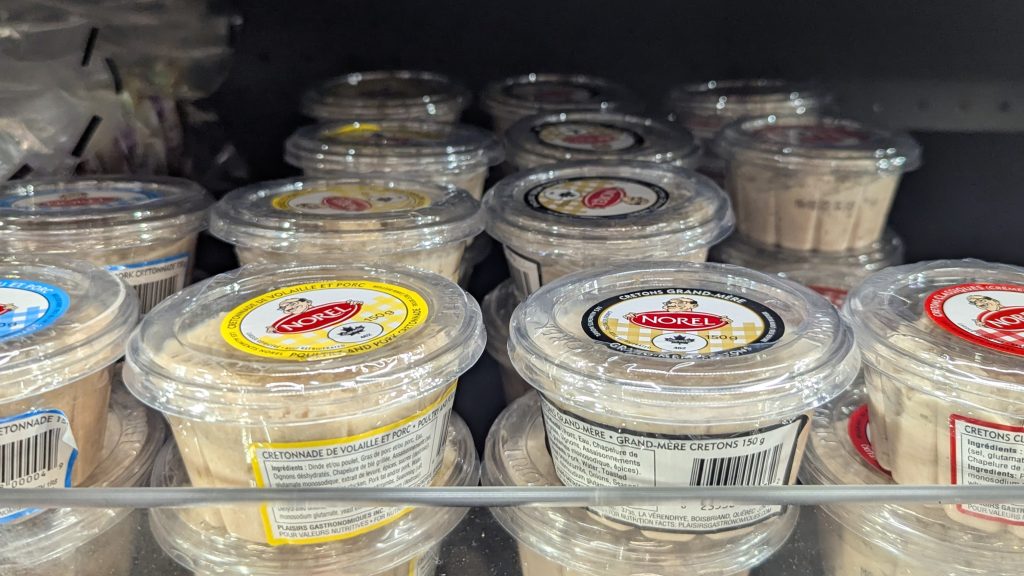
For over 45 years, Montréal-based CP Formplast has led the thermoforming industry by prioritizing customer satisfaction alongside social and environmental responsibility. In this article, we’ll explore the evolution of thermoforming, from its historical roots to the high-tech, sustainable trends that are shaping its future.
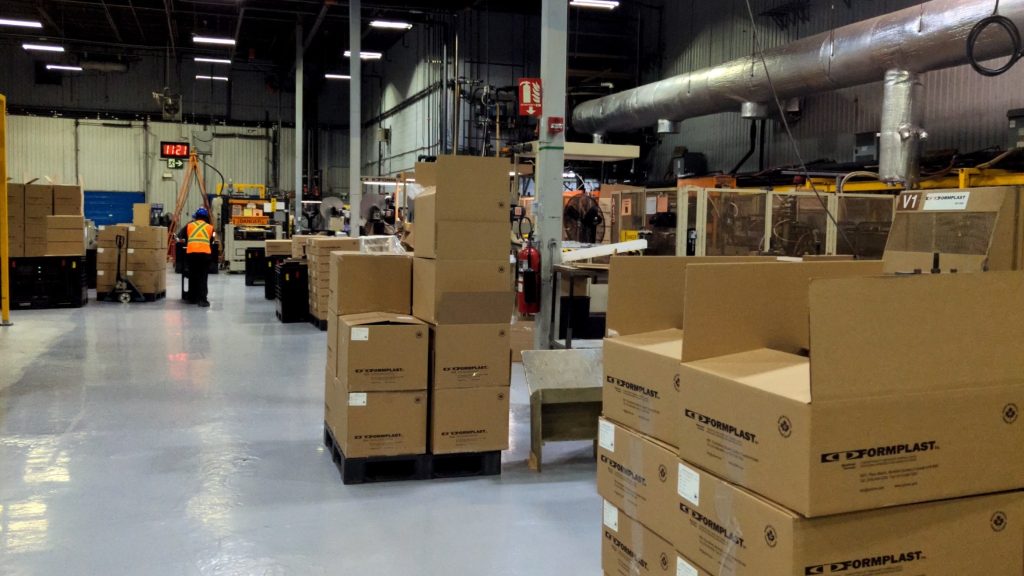
A Brief History: From Parkesine to Precision Packaging
The journey of thermoforming begins with the invention of Parkesine in 1862, widely considered the first manufactured plastic. Innovator John Wesley Hyatt later advanced this material, using steam heat and steel molds to shape objects like toys and bottles, setting the stage for modern techniques. The process took a massive leap forward in 1938 when engineer C.B. Strauch invented the roll-fed thermoforming machine, enabling the mass production of items like ice-cube trays.
Today, that same fundamental process is used to create everything from the clear clamshell for a phone accessory to the sterile trays used in Canadians hospitals, showing just how far the technology has come.
Global Market Growth (USD)
Thermoforming isn’t just a mature industry; it’s a rapidly expanding one. The global market is set to grow from $47.4 billion in 2025 to nearly $60 billion by 2030, reflecting a healthy growth rate of over 4.5% each year. While food and beverage packaging remains the largest application, the pharmaceutical industry is driving the fastest new growth, highlighting thermoforming’s critical role in sterile and secure packaging.
Canadian Market Growth (USD)
Here in Canada, the thermoforming market is also on a strong growth trajectory. Expected to expand from $1.365 billion in 2021 to over $1.836 billion by 2028, this growth is fueled by high demand from key Canadian sectors like food processing, healthcare, and consumer goods.
Thermoforming in Your Daily Life
Thermoformed packaging is part of your daily life, and from our Montréal facility, CP Formplast creates many of the essential items Canadians rely on.
- For the food and beverage industry, we design everything from protective trays and lids to secure clamshells for meats, cheeses, and baked goods. Our packaging is engineered to be tamper-evident and extend shelf life, all while being made with up to 100% recycled PET. We deliver the perfect blend of strength, clarity, and sustainability to ensure your product always looks its best.
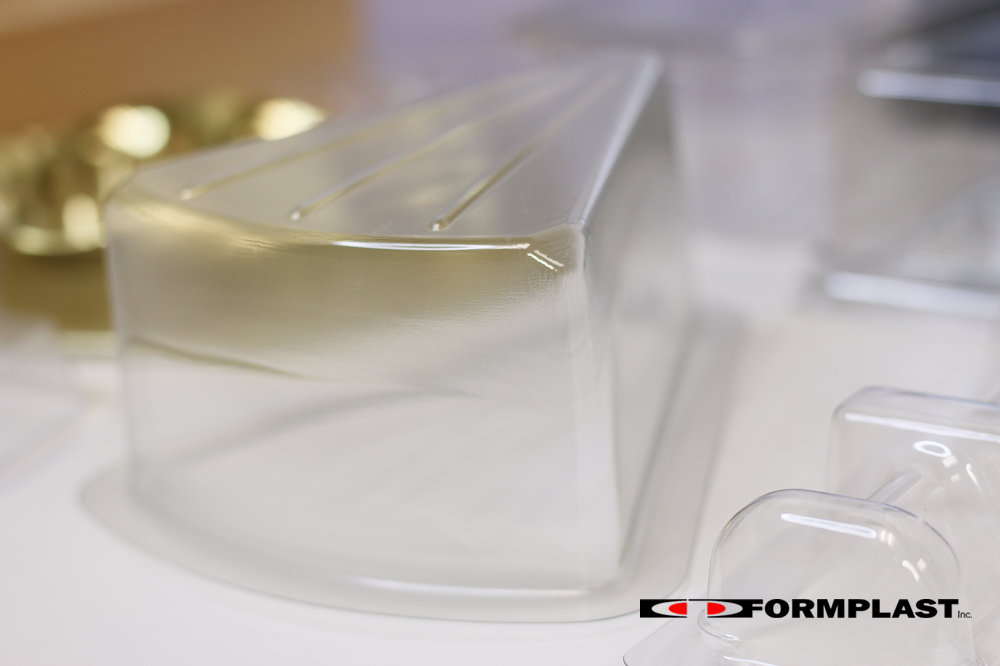
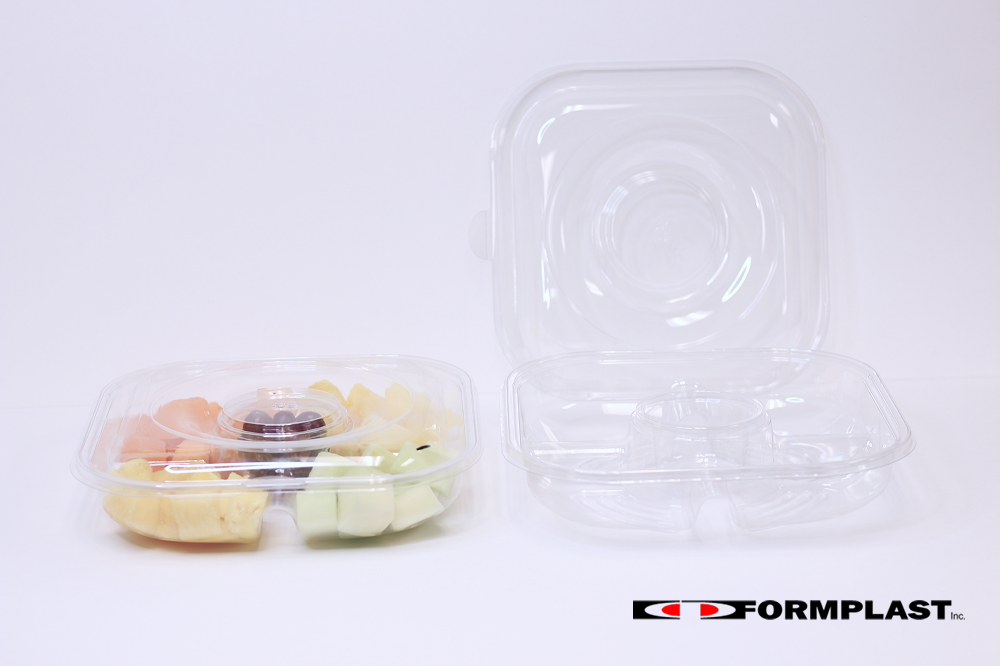
- In the medical and pharmaceutical sectors, rising hygiene standards demand packaging solutions that guarantee safety and integrity. CP Formplast delivers high-quality sterile trays and tamper-evident blister packs, providing the reliable performance that medical professionals and patients depend on.
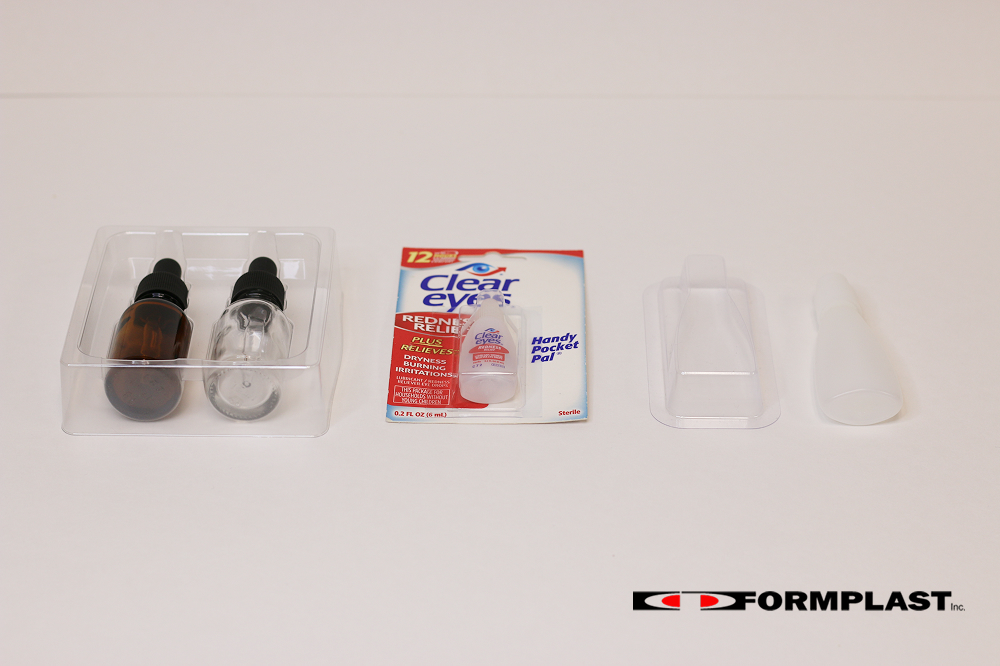
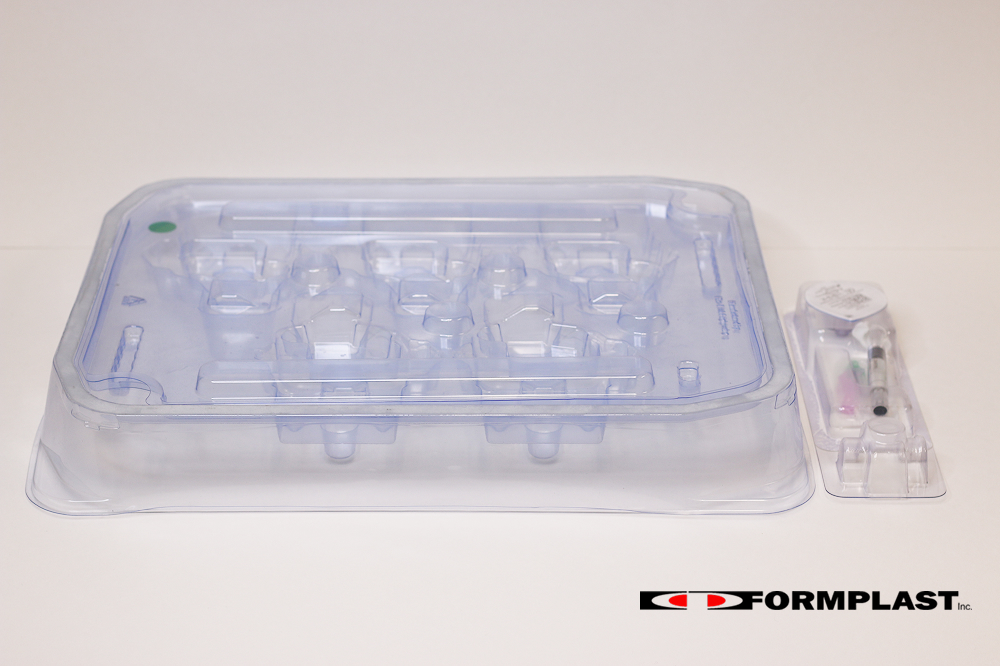
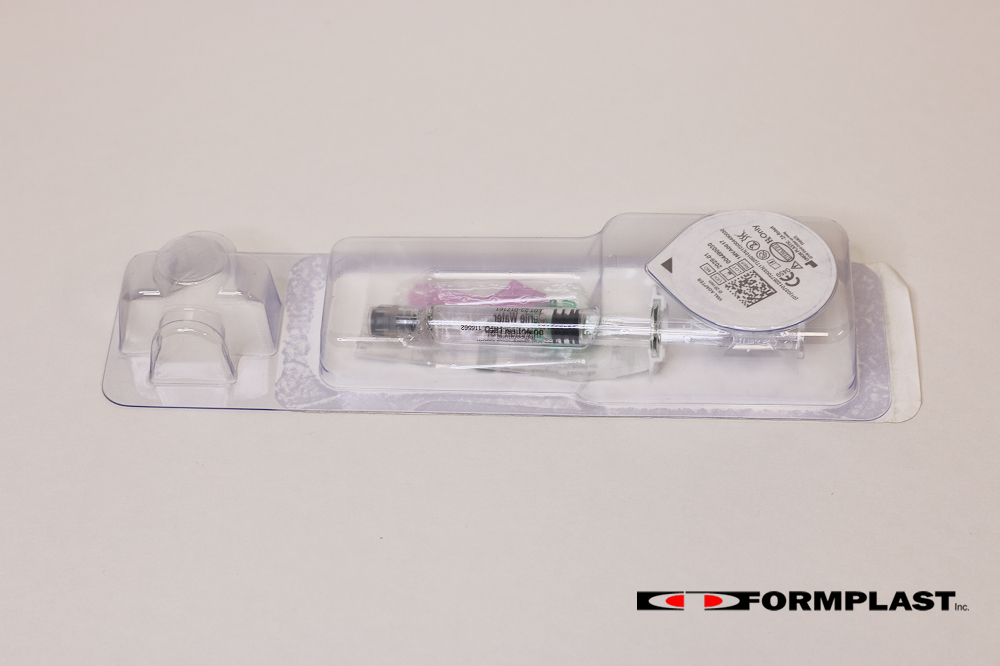
- For consumer goods, thermoformed packaging provides a powerful retail advantage. It combines crystal-clear product visibility with tamper-proof security, all in a durable, professional package designed to hang perfectly on a retail display.
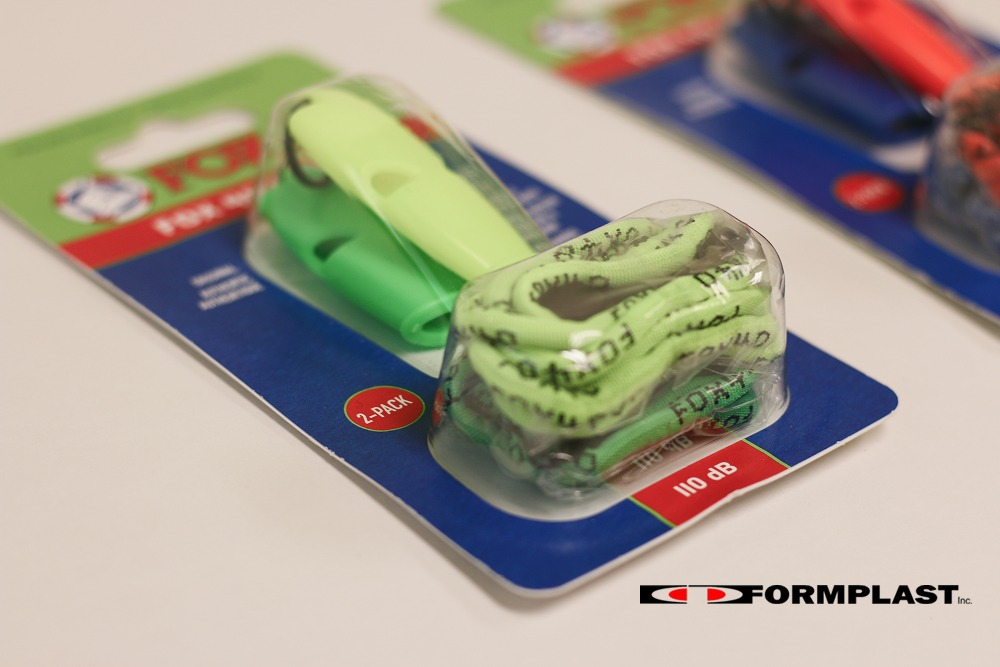
For industrial and transport applications, our robust, heavy-gauge trays are engineered to secure and protect valuable components for complex supply chains in the automotive, electronics, and recreational vehicle sectors. For sensitive electronics, we also provide specialized electrostatic-dissipative (ESD) trays to prevent damage during handling and transport.
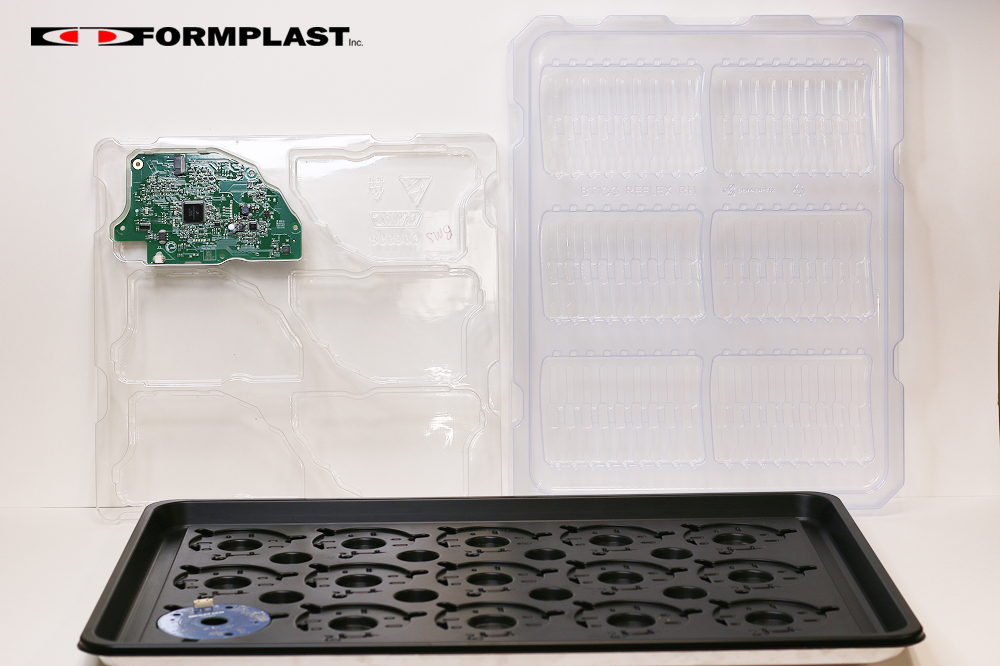
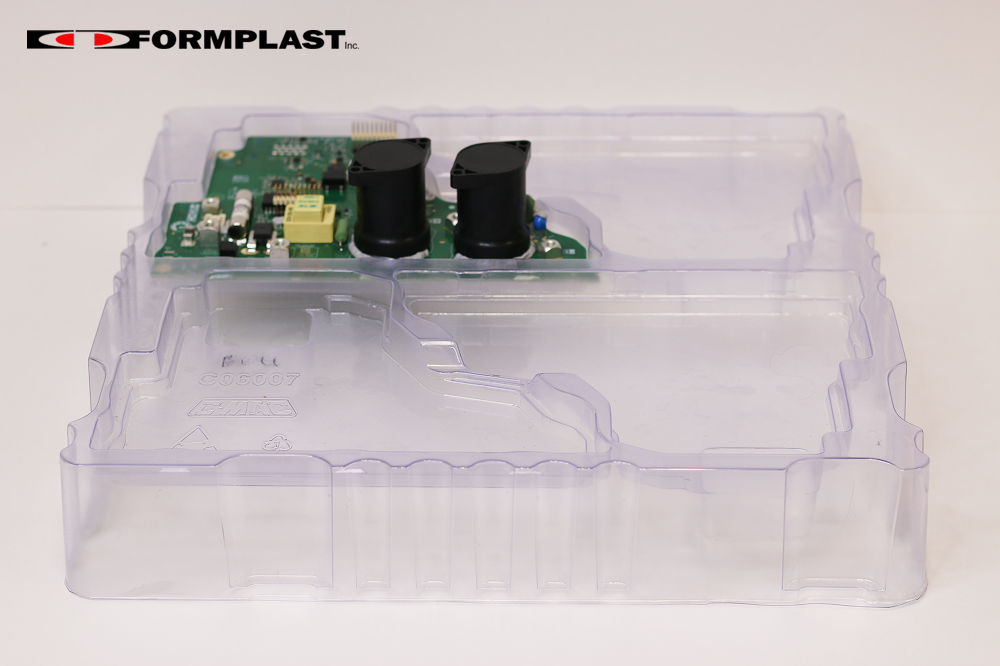
Questions and Answers (FAQs)
Why is thermoformed packaging ideal for food in Canada? Thermoformed packaging is essential for the food industry because it effectively extends shelf life, offers reliable tamper evidence, and protects products throughout the supply chain. In Canada, leading manufacturers like CP Formplast use materials such as 100% recycled PET, which are approved by the Canadian Food Inspection Agency (CFIA) to meet the highest standards for food safety and quality.
Is recycled plastic packaging safe for direct food contact? Absolutely. In Canada, all materials used for food packaging are strictly regulated under the Food and Drugs Act to prevent the transfer of harmful substances. To further ensure safety, suppliers of recycled plastics can obtain a “Letter of No Objection” (LONO) from Health Canada, which confirms the material meets rigorous chemical safety standards. CP Formplast is committed to using materials that adhere to these stringent Canadian and U.S. FDA guidelines.
What is the difference between a clamshell and a blister pack? While both are popular thermoformed designs, their construction differs. A clamshell is a single piece of plastic that is hinged to fold over and enclose a product. In contrast, a blister pack consists of a formed plastic cavity (the blister) that is sealed to a separate backing material, such as a piece of cardboard.
Sustainability in Action: A Greener Approach
CP Formplast is committed to an eco-responsible mission that integrates sustainability into every facet of our operations.
Circularity: Our food containers are manufactured from post-consumer recycled PET, giving a second life to materials like plastic beverage bottles.
Clean Energy: The Montréal plant is powered by clean hydroelectricity from Québec’s grid, which significantly minimizes our carbon footprint.
Operational Efficiency: We further reduce our environmental impact through passive heating and cooling, heat recovery technology, and a closed-cycle water system.
Our ultimate goal is to establish a closed-loop recycling system, enabling us to reclaim used PET packaging from retailers and remanufacture it into new containers.
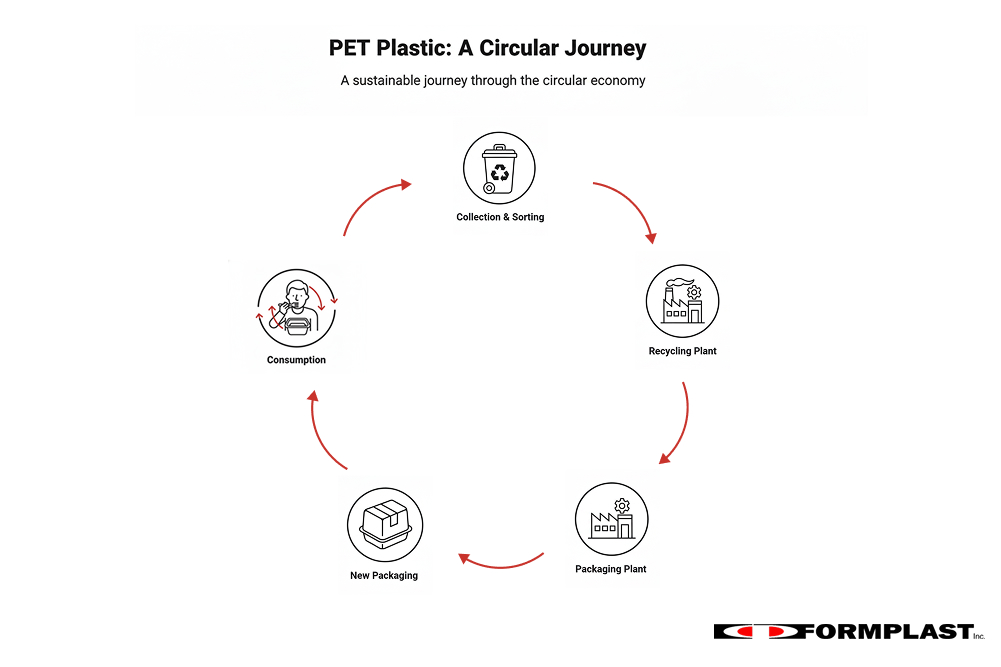
The Future of Thermoforming: Key Trends for 2025 and Beyond
The industry is rapidly evolving, driven by several key trends that CP Formplast is actively embracing.
- Enhanced Sustainability: The push continues for more post-consumer recycled (PCR) plastics, bio-based materials (like PLA and Bio PET), and mono-material designs that are easier to recycle.
- E-Commerce Ready Packaging: With the growth of online retail, packaging must be durable enough for shipping while offering a pleasant unboxing experience. Durable thermoformed inserts and clamshells can reduce the need for secondary packaging.
- Smart Manufacturing (Industry 4.0): Automation, robotics, and AI-driven quality control are making production faster and more consistent. CP Formplast’s use of four high-precision CNC machines for rapid prototyping is an example of this, allowing for quick development of custom designs.
- Hygiene and Safety: The food and medical sectors continue to demand packaging with enhanced barrier properties and tamper-evident features to ensure product integrity and consumer safety.
Conclusion
Today’s thermoforming industry is a high-tech field focused on sustainability and innovation, a significant evolution from its early beginnings. CP Formplast proudly leads this charge in Canada by pairing an advanced design-to-delivery model with a deep commitment to using up to 100% recycled PET and clean energy. Our work demonstrates that it’s possible to achieve exceptional quality and reliability while upholding strong environmental values. With this balanced approach, CP Formplast is perfectly positioned to continue defining the future of packaging in Canada.
Considering Thermoforming Packaging?
Let’s connect to discuss your packaging needs. Our design team will prepare a complimentary proposal to help you decide if thermoforming is the ideal solution for your product.